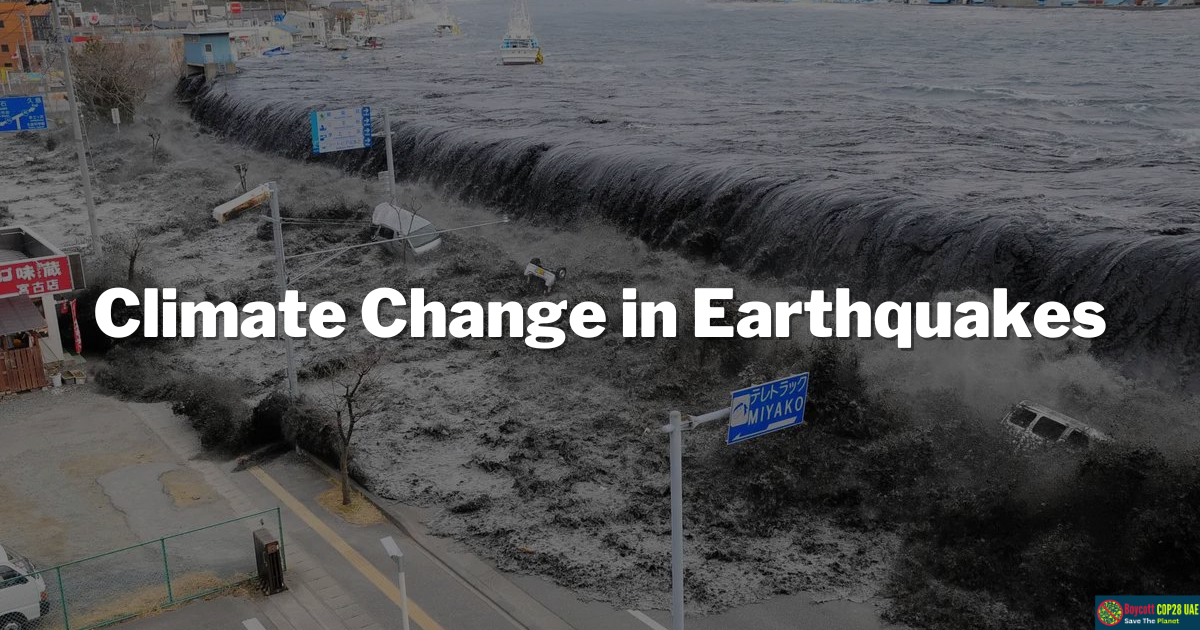Climate change earthquakes refer to the seismic events that occur due to human-induced climate change. The enhancement of greenhouse gas emissions has led to a rise in global temperatures, causing changes in the Earth’s crust and contributing to earthquakes and other natural disasters. While climate change earthquakes may not be a well-known phenomenon, they are a growing concern as the planet continues to warm. In this blog post, we will explore the relationship between climate change and earthquakes and how these events can impact our environment and society.
Climate Change Earthquakes: Is it Involved in Earthquakes
The Earth’s surface is divided into approximately 14 main pieces (and numerous smaller ones). These pieces are in constant motion, and most earthquakes occur along their edges when they collide, slide past, or separate from one another. These plates are influenced by convection currents in the Earth’s mantle, which propel them at a rate of 2 to 20 centimeters per year. Frequently, the sliding plates become stuck and contort under the mounting pressure. Earthquakes are the abrupt release of this pressure.
The intensity of an earthquake is determined by the amount of energy discharged, the extent of ground movement and the depth of the quake. It’s important to note that climate change does not directly affect earthquakes. However, plate tectonics, responsible for earthquakes, can influence the climate over vast geological periods. Recently, Turkey and Syria experienced a shallow earthquake, occurring 17 kilometers beneath the Earth’s surface, with a magnitude of 7.8.
Its impact was significant, spanning an area of 190 kilometers by 25 kilometers. The region surrounding Turkey is highly geologically active, hosting three plate boundaries: the Arabian, the Anatolian (which encompasses most of Turkey), and the African plates. The Arabian plate exerts westward pressure on the Anatolian plate, and the earthquake transpired between these plates along the East Anatolian Fault.
In the past a major earthquake measuring 7.6 on the Richter scale occurred in 1999 along the North Anatolian Fault, resulting in substantial damage to infrastructure. Tragically, this event claimed over 17,000 lives and displaced a quarter-million individuals from their homes.
What Causes Earthquakes?
While climate change does not directly cause earthquakes, some evidence suggests that it can indirectly affect the frequency or intensity of certain types of seismic activity, such as volcanic eruptions or landslides, which can trigger earthquakes. Here are a few strategies climate change can indirectly influence seismic activity:
- Melting Glaciers: Climate change leads to melting glaciers and ice caps, resulting in the redistribution of enormous amounts of weight from land to water. This shift in weight distribution can cause the Earth’s crust to adjust, potentially inducing seismic activity
- Groundwater Extraction: In regions where groundwater is heavily extracted, such as in some areas experiencing drought due to climate change, removing large amounts of water from underground reservoirs can lead to subsidence or sinking of the land. This subsidence can generate stress on fault lines and potentially trigger earthquakes
- Changes in Surface Loading: The alteration of surface loading due to changes in water levels, such as from sea level rise or changes in reservoir levels, can exert stress on faults. This stress can increase the likelihood of earthquakes in some cases
- Induced Seismicity: Certain human activities associated with climate change, such as hydraulic fracturing (fracking) for oil and gas extraction or geothermal energy production, can induce seismicity. These activities involve injecting fluids into the ground, which can lubricate existing faults, making them more prone to slip and causing earthquakes
It’s important to keep in mind that the influence of climate change on seismic activity is still an area of ongoing research, and the relationship between the two is complex. While these indirect connections exist, the primary cause of earthquakes remains the tectonic forces within the Earth’s crust.
Final Words: Climate Change Earthquakes
While evidence suggests that climate change can indirectly affect the likelihood of certain geological events, such as landslides and volcanic eruptions, the link between climate change and earthquakes is less clear.
Some studies propose that changing climate conditions, such as melting glaciers or groundwater distribution, may contribute to stress redistribution in the Earth’s crust, potentially influencing seismic activity. However, the direct impact of climate change on earthquake occurrence or magnitude is still a topic of ongoing research and debate among scientists.






